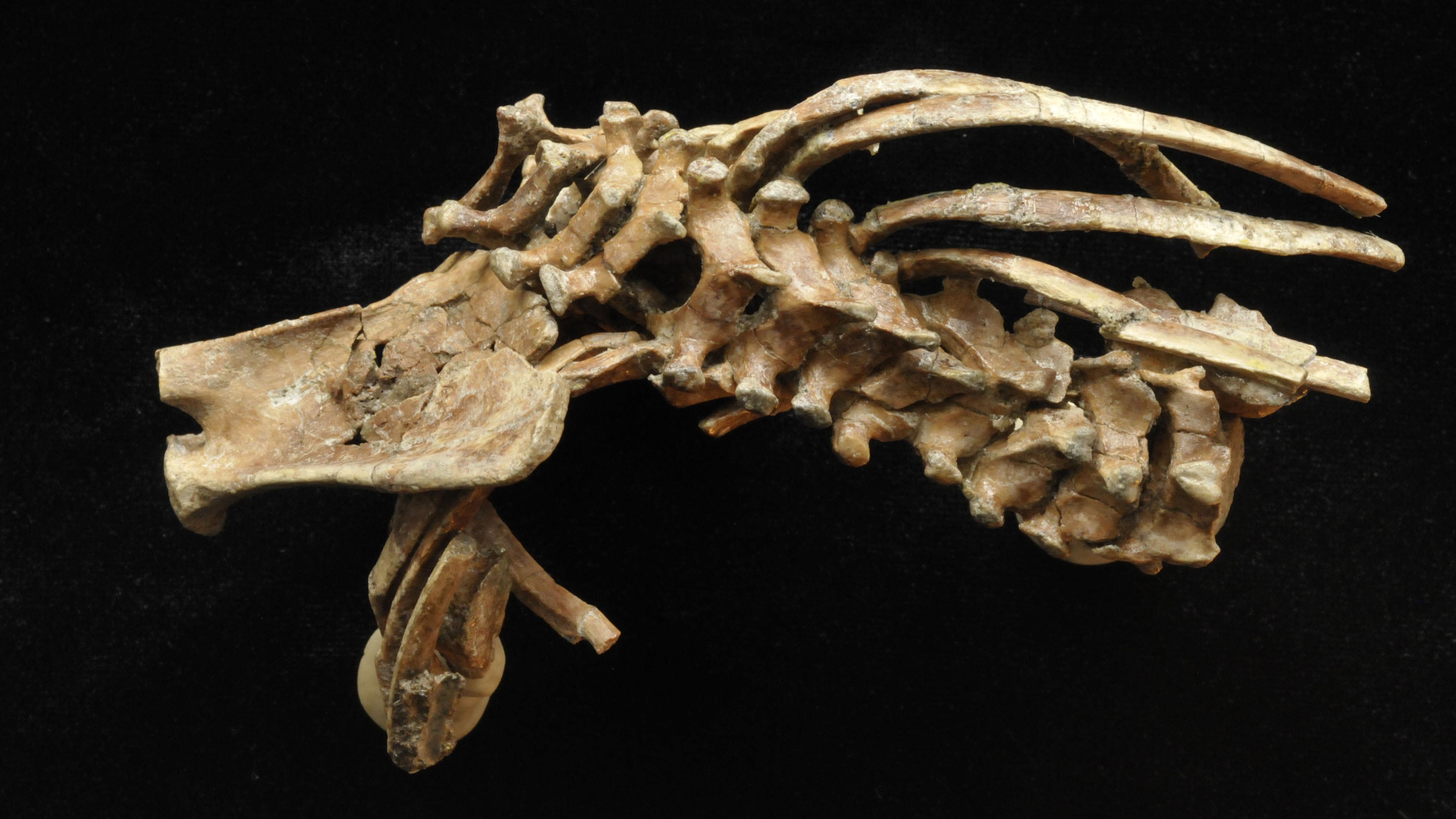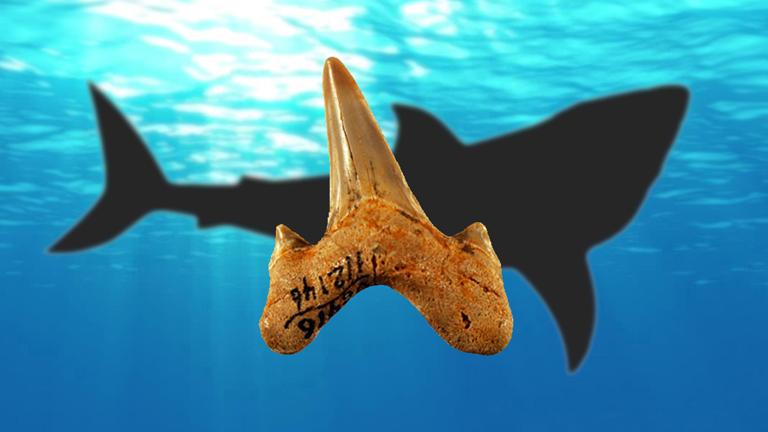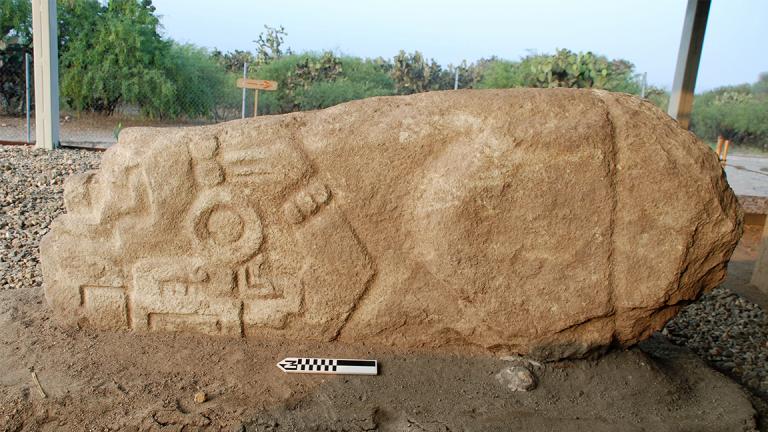Thanks to years of painstaking work by University of Chicago researcher Zeray Alemseged, scientists know more about the origins of the human spine.
“This skeleton captures the process of evolution as it happened 3.3 million years ago,” said Alemseged, a professor of organismal biology and anatomy. “We’re documenting the transition in the backbone from a more primitive condition to a more human condition.”
 University of Chicago professor Zeray Alemseged discovered the most complete spinal column of any early human relative. (Zeray Alemseged / DRP)
University of Chicago professor Zeray Alemseged discovered the most complete spinal column of any early human relative. (Zeray Alemseged / DRP)
Alemseged discovered the 3.3 million-year-old fossil in what he calls the “paleoanthropological hot spot” of Dikika, Ethiopia, in 2000. To extract it, he had to carefully remove sandstone and sediment from the fossil “grain by grain” using instruments comparable to what one would find in a dentist’s office.
“I had to mechanically clean and prepare the fossil singlehandedly for the first six years and then I got help from another technician,” Alemseged said. “It’s a long, painstaking but rewarding process when you have such an exceptionally preserved specimen.”
 His efforts revealed an “unprecedented” discovery – the nearly complete skeleton of a 2 1/2-year-old belonging to the same species as the famous Lucy skeleton (Australopithecus afarensis).
His efforts revealed an “unprecedented” discovery – the nearly complete skeleton of a 2 1/2-year-old belonging to the same species as the famous Lucy skeleton (Australopithecus afarensis).
The fossil, known as Selam, which means “peace” in many Ethiopian languages, is the most complete early human child skeleton comprised of the skull (upper and lower jaw), whole torso, leg bones, foot and all three types of vertebrae found in the spinal column (cervical, thoracic and lumbar).
“Normally, when you make discoveries of hominin fossils, you find fragments of the leg or jaws, or pieces and bits of the skeleton,” Alemseged said. “This discovery of the skeleton was unprecedented. ... To have an almost complete vertebral column is unheard of, particularly for this period of time, but also for a juvenile individual.”
An analysis of the fossil using advanced imaging tools revealed how early human ancestors’ spinal columns were organized. Selam is the first fossil to show, like modern humans, our earliest ancestors had 12 thoracic vertebrae and 12 pairs of ribs, which is fewer than most apes. This arrangement marks a transition toward the type of spinal column that allows humans to walk more efficiently and quickly.
“We are documenting for the first time in the fossil record the emergence of the number of the vertebrae in our history, when the transition happened from the rib-bearing vertebrae to lower back vertebrae, and when we started to extend at the waist,” Alemseged said. “This structure and its modification through time is one of the key events in the history of human evolution.”
While Selam would have been able to walk, “this individual would not have been a great runner because the species didn’t have the fully formed anatomy that allows us to rotate our backs as we run or walk fast,” he added.
The study was published in the Proceedings of the National Academy of Sciences.
![]()
On the show
Zeray Alemseged joins host Phil Ponce in discussion.
Follow Kristen Thometz on Twitter: @kristenthometz
Note: This story was originally published May 22.
Related stories:
 DePaul Professor Discovers New Prehistoric Shark
DePaul Professor Discovers New Prehistoric Shark
Oct. 20, 2016: About 20 million years ago, a 13-foot predator swam in warm, shallow seas across the globe. This extinct shark was recently discovered by an international team of researchers led by a DePaul University professor.
 Field Museum Fossil Identified as Early Relative of Dogs, Bears
Field Museum Fossil Identified as Early Relative of Dogs, Bears
Oct. 14, 2016: Thanks to an inquisitive Field Museum researcher, a nearly 40-million-year-old fossil housed at the institution has been identified as one of the earliest relatives of dogs, bears and foxes known as a beardog.
 Field Museum Archaeologists Find Centuries-Old Crocodile Stone
Field Museum Archaeologists Find Centuries-Old Crocodile Stone
Sept. 2, 2016: Field Museum archaeologists made an unexpected find while excavating an the site of an ancient city in southern Mexico.








